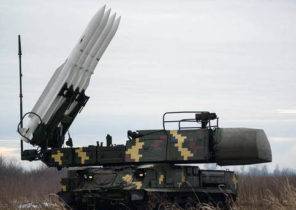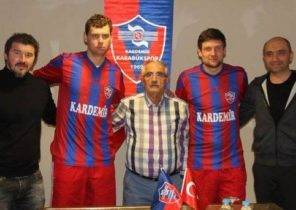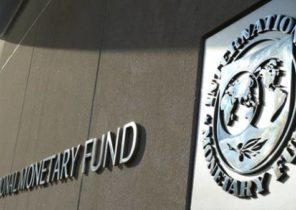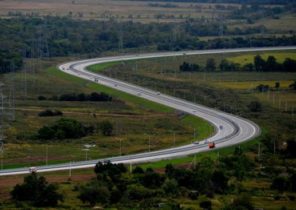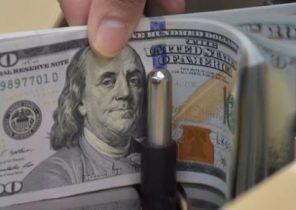
During the period of the Khrushchev “thaw” in the 60-ies of the last century before Gorbachev’s “perestroika” Latvia became the most economically developed Republic of the Soviet Union with the best gross domestic product in recalculation on one inhabitant. However, the price that country had to pay for this apparent wealth, was very high, write the authors of the book “History of the national economy of Latvia”.
The publication is one of the most ambitious literary projects since the restoration of Latvia’s independence. Working on the book the researchers came to the conclusion that imposed in those days Latvia the economic model were very favorable to the Soviet Union: according to the mentioned data, in the period from 1960 to 1985, the Soviet Union allocated to the Republic of Latvia 15.5 billion (including military spending and budget subsidies), and in return received 28.5 billion. That is, assure the authors, the net profit of the Soviet regime from Latvia reached 13 billion rubles.
But, as noted in the book, despite the fact that Latvia in the USSR is clearly “worked for profit”, for its inhabitants is not carrying any goods. All cash surpluses were transferred to the budget of the Union and was spent outside the Republic. In the 40-ies and 50-ies of the last century, the budget of the USSR “eat” more than ¾ of the total income of Latvia, the researchers said.
Then, in the economic Union there has been a change in the direction of decentralization, which allowed the republics to obtain compensation for the produced agricultural products. However, this led the Soviet leadership to realize the fact that the model of the Soviet economy can only exist in a strict command economy and a pronounced centralization.
As soon as the control of processes was softened, began to deform and the system itself. If in 60-ies, the Soviets managed to regain economic power over Latvia, then in the 80s the system collapsed. This has contributed to adverse external circumstances — for example, the collapse of oil prices in international markets.
Describing this time period, the authors of “the history of the national economy of Latvia” demonstrate that the Republic was distinguished by a sharp increase in production volumes is due to stable prices in the domestic market that brought the budgets of both the LSSR and USSR, almost a fourfold increase in the ruble equivalent. However, it preserved the principle that all positive “surplus” between costs and revenues had been wasted by the Soviet power in Latvia.
Moreover, the authors argue that the 70 years with the rapid growth of budget revenues expenditures grew much more slowly, and with each year the amount that Latvia did not return. In the late ’70s and early’ 80s, almost a third of Latvia earned money of the USSR was taken away from her forever, scientists have estimated. Then this huge difference is still beginning to level off — and rapidly, as the Soviet Union raised the purchasing price of agricultural products and simultaneously began to pay farmers cash compensation for work done in excess of the plan.
This preserves the situation that the budget was reviewed in great measure lost its independence and was only a Supplement to the budget of the USSR. At the same time, to create the illusion that the USSR fueled the economy of Latvia in cases when the cost was higher than planned, the LSSR received grants. The authors called this the “benefit of the Soviet Union in the ideological aspect”.
The higher costs were usually associated with the implementation of the imposed large industrial projects of the Latvian SSR itself often “pull” could not. And the resulting “excessive profit” of Latvia, the leadership of the Soviet Union spent on the development of their space and military programs, including military action around the world, says the book.
Despite current domestic economic circumstances, Latvia in this period managed to become the most developed Republic and provided the highest rate of GDP. The authors called it “a kind of internal standard of the USSR”. They noted the fact that the possibility of a rest in Jurmala became for the Soviet person of a status thing — “the first and often the most distant journey to the West”. Compared to other Soviet republics, the social status and well-being of Latvians increased.
However, the price that had to pay for the sign beautiful life, was high. In Latvia was created, more and more enterprises, which manufactures products for the needs of the market outside the country. Most of the experts at these companies were imported from other republics, and Latvia personnel prefer not to cook. As a result, according to the book, experts “came to Latvia, seeing it as a region of Russia, which along with Russian lives, another large ethnic group which, moreover, is well said in Russian.” The authors called this situation “the industrial Russification” which, in their opinion, every year has reduced the percentage of ethnic Latvians in the total number of the population.
This process is very painfully reflected in the course of restoration of independence of Latvia when a large part of which existed in the country, “flagship industry” of the USSR were completely unadapted to the realities of capitalism.
The main author of the book “History of Latvia’s economy is the rector of the Vidzeme higher school Gatis krūmiņš. This publication was prepared with the participation of researchers Edwin Evarts, Eric Ekabsonsa, Viesturs, Paula Karups, Ojārs Kehris, Edmund krastiņš, Peteris leiskalns, present Misa, Uldis Osis, Robert Remessa, Janis Silins and Valdis Dombrovskis.
